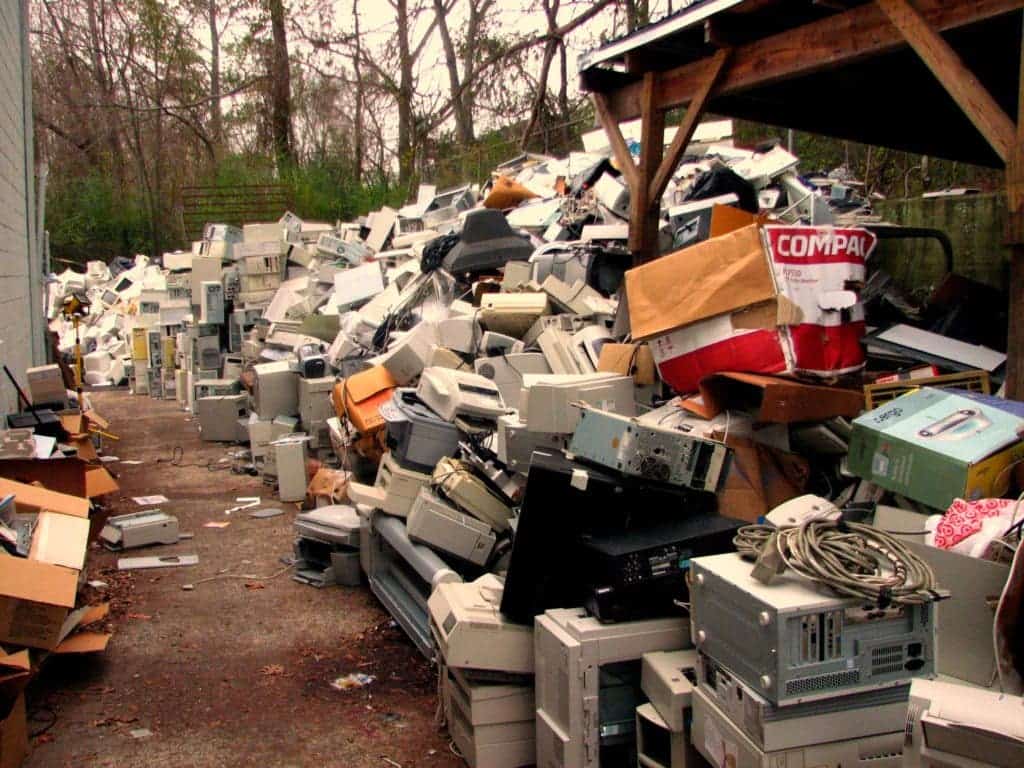When the new iPhone comes out, thousands of people rush out to buy it and discard their old phones. Electronics are a big part of life now and they have a limited lifespan of functionality. Sometimes, they just stop working or other times, they become outdated, or a newer model comes out. In any case, all of these discarded electronics are piling up.
The United Nations University, an academic branch of the UN, compiled a Global E-waste Moniter 2017 report, that concluded that e-waste has increased significantly just from 2014 to 2016. A grand total of 44.7 metric tonnes of e-waste was produced in 2016, that is a 8% increase from 2014 (41.4 million metric tonnes).
A lot of waste
In a press release, the United Nations University compared the weight of 2016’s electronic waste to “nine Great Pyramids of Giza, 4,500 Eiffel Towers, or 1.23 million fully loaded 18-wheel 40-ton trucks, enough to form a line from New York to Bangkok and back.”
E-waste includes anything with a plug or battery, such as televisions, phones, solar panels, refrigerators, microwaves and so on. The way that electronics are marketed, created, and sold is such that they need to be continuously re-bought. The average smartphone life-cycle in the USA, China, and major EU economies does not last more than one-and-a-half to two years. Personal electronics are increasingly more affordable so people are more likely to buy a new one than take someone’s old one.

The situation is critical as the amount of e-waste is expected to rise by another 17% by 2021. Only 20% of the world’s e-waste was recycled in 2016, 4% was thrown in landfills, and the rest was burned, recycled by third-party organizations, or stored in homes. And it is a big waste, because the raw materials in 2016’s e-waste are valued at 55 billion Euros (64.7 billion USD).
Small and large appliances (cameras, electric toothbrushes, washing machines), and heating/cooling equipment (stove, freezer) waste will likely grow the fastest. They already made up 75% of global e-waste. Other electronic waste, like phones, TVs, computers, and lamps are expected to grow at a slower rate. These figures are by weight, not number, so the reason that the other electronics aren’t expected to grow as much is because they are usually smaller.
Management
The regions that produce the most e-waste, per person, are Oceania (17.3 kg per person), Europe (16.6 kg per person), and the Americas (11.6 kg per person). Although their percentage contribution is low overall, poorer countries are experiencing the highest growth in electronics sales.

It’s not all bad, almost 66% of the world’s population live in areas where there are e-waste management laws. What can be improved, is people’s awareness of the laws, enforcement, and infrastructure for e-waste recycling. Additionally, there needs to be improved measurement of global e-waste to set certain targets. Right now, the fate of a lot of e-waste is unknown. Companies can contribute by designing electronics with eventual recycling in mind. Basically, there is a lot more that we can do to reduce electronic waste.
Access the Global E-waste Monitor 2017 report here.






